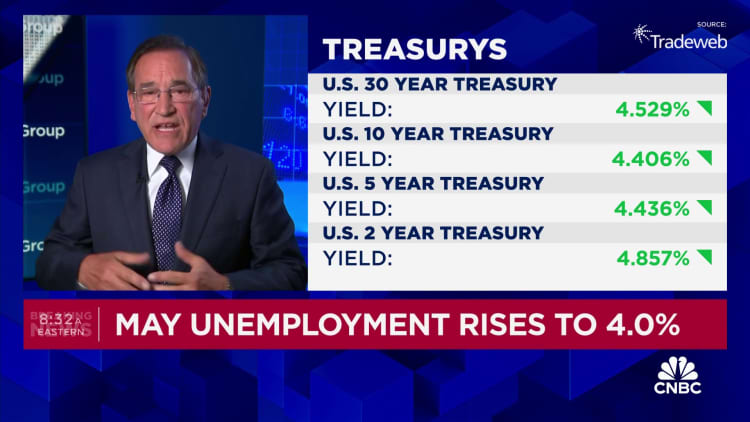
Here’s where the jobs are for May 2024 — in one chart
CNBC
The U.S. economy added 272,000 jobs for the month, coming out significantly higher than the Dow Jones consensus estimate of 190,000. Employment swung higher in several industries, with health care leading the way again this month, followed by government and hospitality. These sectors also accounted for more than half of the month’s total gains. Meanwhile, job losses occurred in department stores and furniture and home furnishings retailers.
Job growth in May was surprisingly strong, pushing back on lingering fears of a broader economic slowdown and likely slowing the Federal Reserve’s rate-cutting timeline.
The U.S. economy added 272,000 jobs for the month, coming out significantly higher than the Dow Jones consensus estimate of 190,000. That’s also higher than the average monthly gain of 232,000 over the last 12 months, according to the U.S. Bureau of Labor Statistics.
In May, employment swung higher in several industries, with health care leading the way again this month, followed by government and hospitality. The three sectors, respectively, added 68,000, 43,000 and 42,000 jobs, similar to trends seen over the past year. These sectors also accounted for more than half of the month’s total gains. The combined health-care and social assistance space netted more than 83,000 jobs in May.
The professional, scientific and technical services sector was also a bright spot in May, as it added 32,000 jobs during the month, which is much higher than the average monthly gain of 19,000 over the past 12 months.
On the other hand, social assistance employment trended higher as it added 15,000 last month, below the sector’s average of 22,000 jobs per month seen over the last year. Meanwhile, job losses occurred in department stores and furniture and home furnishings retailers.
Other major industries — including oil and gas extraction, construction, manufacturing, information and financial activities — all saw little or no change over the month in employment, per the report.
Investors walked away from the report discouraged that the Federal Reserve would cut rates in June, noting that the increase in job growth and above-average wage growth paints a picture of a fairly strong consumer.
“As has been the case recently, job growth was driven by non-cyclical areas like health care and government, but cyclical areas like leisure and hospitality were strong…this is likely
CNBC
The full article is available here. This article was published at CNBC Economics.
Comments are closed for this article!